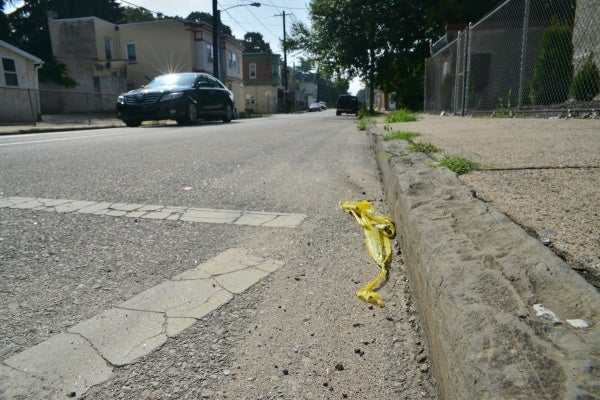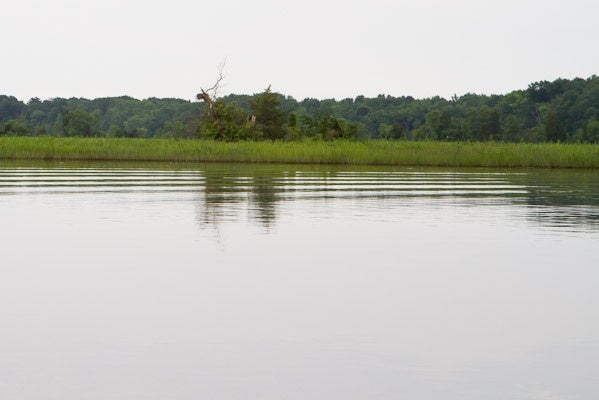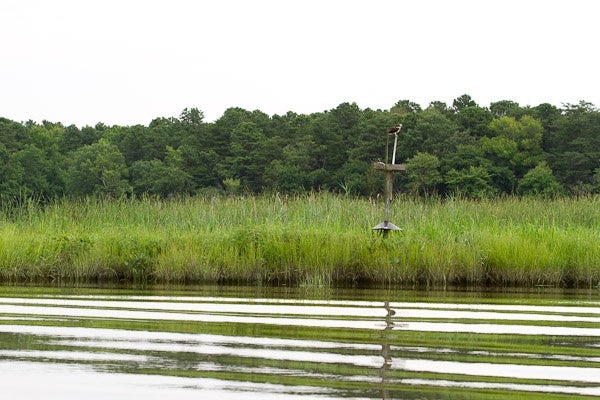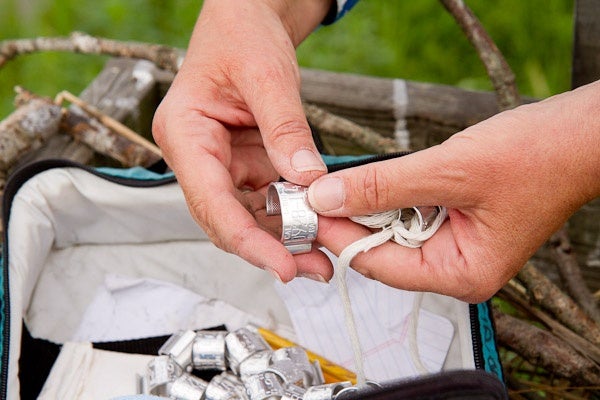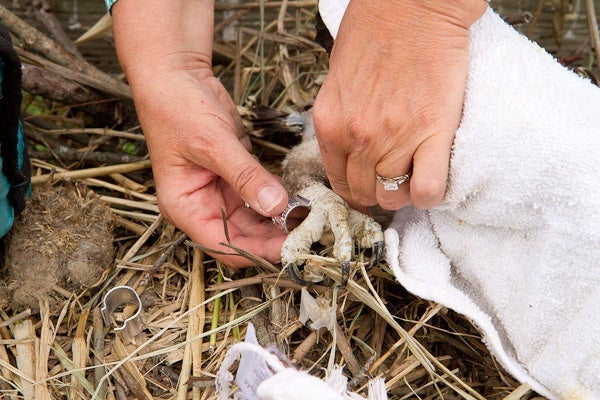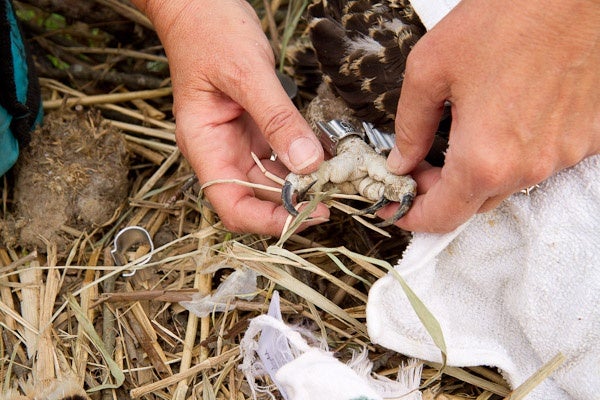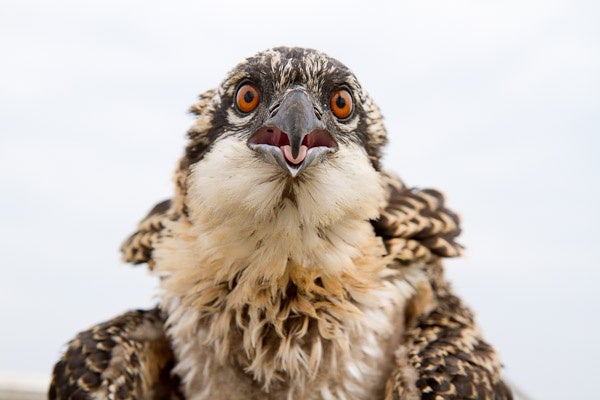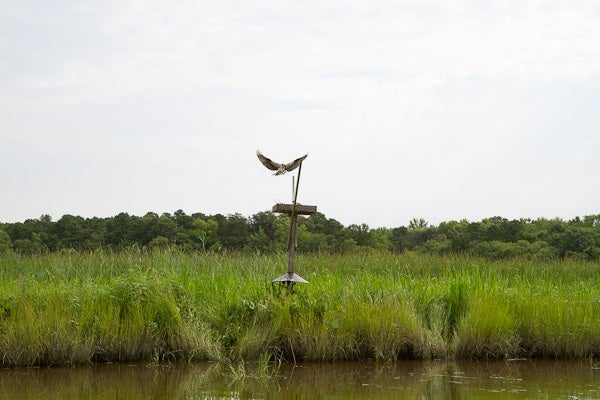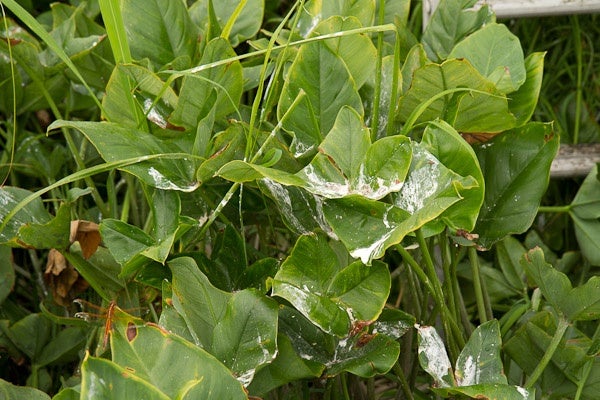Volunteers help the osprey stage a comeback in New Jersey [PHOTOS]
The osprey has staged a serious comeback in New Jersey since pesticides and habitat loss nearly wiped it out. But the return of the majestic bird to the marshes and shores of the Garden State required a little help from their human friends.
Friends like Jane Morton Galetto, who has lived on the Maurice River in Cumberland Co., N.J., since she was 10.
On a recent boat ride down the Maurice, Galetto steered between marshy banks covered with wild rice that nearly glowed green in the morning light. She pointed to bends in the river and explained their names — “boneyard” for the spot an old Swedish cemetery started washing into the river, “osprey ghetto” for a stretch with several osprey platforms.
She came to a stop in front of one of those platforms.
It looked like a telephone pole with wooden “V” at the top. In the middle of the V sat a wooden platform, where a pair of osprey have set up housekeeping for their two chicks.
It is one of a hundred nearly identical platforms Galetto has built over the past three decades with her volunteer group Citizens United to Protect the Maurice River.
Galetto is visiting this one to band the two chicks in the nest before they learn how to fly. Unique identification numbers on bird bands are one of the main ways biologists study different species — where they migrate, what they’re dying from, and how long they live.
To get to this nest, Galetto rammed the boat onto the bank, leaned a ladder against the osprey platform and climbed up.
//
Data showing the change in New Jersey’s osprey population since the ban of DDT in 1968. Prior to the advent of DDT, there were believed to be around 500 or more osprey nests in the state. Source: Conserve Wildlife New Jersey and the New Jersey Division of Fish and Wildlife’s Endangered and Nongame Species Program. Note: An earlier version of this graph included an incorrectly plotted minimum productivity threshold which has been removed.
Inside the large nest, the chicks were large, about the size of footballs, with brown and white feathers for camoflauge and orange eyes that will turn yellow as they mature.
“This one over here is displaying a defense mechanism, he’s raised his feathers,” Galetto said. Raised feathers make the bird look larger and more intimidating. “That’s supposed to make us very frightened.”
Galetto’s savvy about defense mechanisms is hard-earned. Over the past three decades, she has banded at least 700 chicks, and knows the personality of the mature birds on the river. “I guess they’re kind of like my kids a little bit,” Galetto laughed. “I don’t think the osprey feel that way about it.
The return of the osprey
Before Galetto and her husband began building osprey platforms on the banks of the Maurice, the river was home to only one nesting pair.
“Ospreys are one of those top-tier species, top predators, that were severally affected by DDT in the food chain,” said Kathy Clark, a biologist with the endangered and non-game species program for the state of New Jersey.
DDT thinned osprey eggs, so when adults sat on them to incubate, they broke. The osprey population had tumbled from five or six hundred nesting pairs to about fifty around the time the insecticide was outlawed in New Jersey in 1968. But that was not the only threat from humans. “In this period of declining ospreys, in the 50s 60s and 70s, there was a lot more human development on the coast, and that took away a lot of the nesting sites for ospreys,” Clark said, “whether cedar trees in the marsh or just trees in the barrier islands.”
That is the problem volunteers have tried to fix by building the platforms, which come equipped with predator guards. Volunteers also band the chicks and monitor colonies to help the state manage the birds.
In the past few years, the osprey population has finally climbed back to its pre-DDT levels. That is a good sign for humans too, as ospreys are considered an indicator species for overall ecosystem health.
Clark said of all the volunteers who have helped the osprey make a comeback, Jane Morton Galetto is in a category all her own. “I would say that a good part of the Delaware Bay osprey population could be probably linked back to her efforts and the efforts of Citizens United,” Clark said. Galetto said all she provided the osprey was a bit of a kick-start.
WHYY is your source for fact-based, in-depth journalism and information. As a nonprofit organization, we rely on financial support from readers like you. Please give today.



